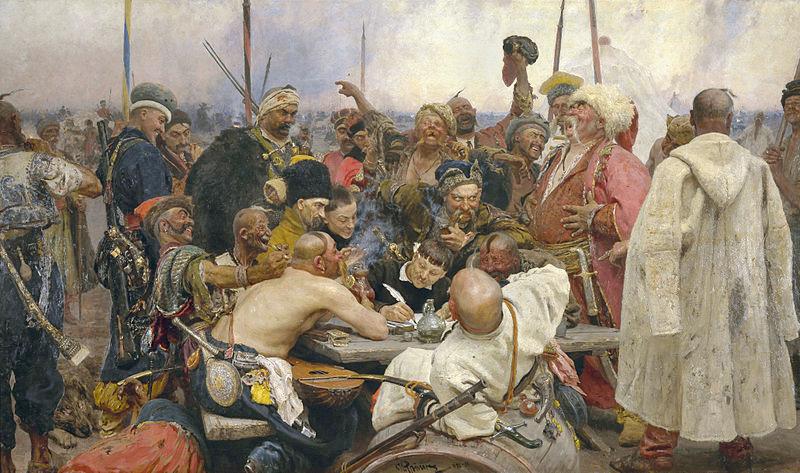
Figure 1.--This historical depiction was painted by Ilya Repin (1844–1930) and titled , 'The Zaporozhye Cossacks Replying to the Sultan'. It was paitned in 1891 and depicts a scene from the late-16th or early 17th century. |

|
Kozak (Cossack) is derived from a Turkish word meaning 'free man'. Refugees fleeing serfdom and slavery moved into the borderlands that hasbecome known as the Ukraine (15th-18th centuries). Over time the term became used for Ukranians who moved into the steppe to practice trdes and engage in a range of economic activities (hunting, fishing, honey production, and salt collction. The Kozaks established democratic military communities, rare in Europe at the time and in sharp contrast to the absolutist Tsarist regime. The Kozaks would play an impotant role in Russian and Ukranian history. They elected their leaders who they called hetmans. They established an island stronghold in the Dnipper. They struggled against th Ottomns, Poles, and Russians, all of which wanted to acquire the rich agriculturl land to their empires. Oppression of the Ukranian peasantry and the union of the Ukranian Church with Rome led to the Kozak rebellions known as The Deluge (1648). Chmielniki fought for independence from the Policized nobility. The Zaporozhe achieved virtual independence. This struggle greatly weakened the Commonwealth (Polish Kingdom). The Cossaks sought a treaty with the rising state of Moscow (Muscovy) gfor protection from Poland. The agreement was known as the Treaty of Pereyaslav (1654). Poland then sought to negotiate with the Cossaks and reached a compromise known as the Union of Hadyach (1658). An extended war bewtween Poland and the Russians led to Treaty of Andrusiv (1667) in which the two powers partitioned the Ukraine. Polans seeded the noertheastern Ukraine to the Russians. Tsar Peter I supressed the cossacks after the Mazzepa Rebellion.
Navigate the Children in History Website Site:
[Return to the Main Ukranian History Page]
[Introduction]
[Biographies]
[Chronology]
[Climatology]
[Clothing]
[Disease and Health]
[Economics]
[Geography]
[History]
[Human Nature]
[Law]
[Nationalism]
[Presidents]
[Religion]
[Royalty]
[Science]
[Social Class]
[Bibliographies]
[Contributions]
[FAQs]
[Glossaries]
[Images]
[Links]
[Registration]
[Tools]
[Children in History Home]
Navigate the Boys' Historical Clothing national pages:
[Return to the Main Ukranian page]
[Return to the Main European history page]
[Afghanistan]
[Belgium]
[Czechoslovakia]
[England]
[Estonia]
[France]
[Germany]
[Hungary]
[Italy]
[Japan]
[Latvia]
[Lithuania]
[Mexico]
[New Zealand]
[Norway]
[Poland]
[Romania]
[Russia]
[Tajikistan]
[Turkey]
[United States]
[Uzbekistan]
